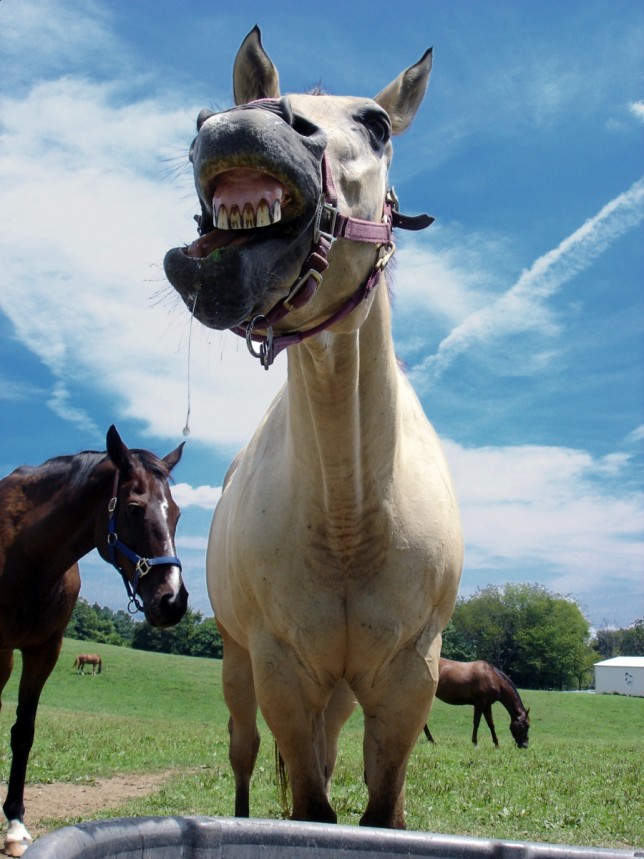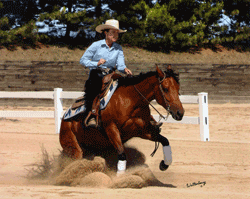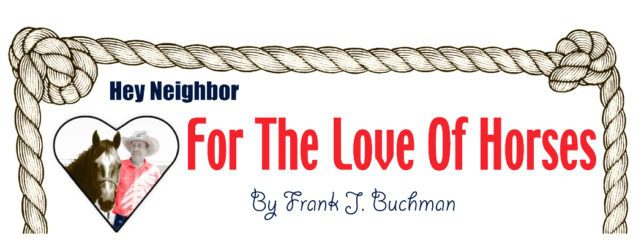Spring is cleaning time around the home, yard and barn, and horses frisking in the sunshiny wind deserve attention as well.
That advice comes from Kristina Hiney, PhD equine nutritionist and exercise physiologist, who has summarized her spring horse checkup recommendations.

“Horses should be vaccinated before mosquito season, because many diseases are transmitted by mosquitoes,” Hiney said.
A stronger immunity and fewer skin or metabolic reactions occur when vaccinations are spread out over several days or weeks instead of being given all at once.
“A Coggins test must be performed annually, if the horse is going to be hauled from the ranch, to test for carriers of equine infectious anemia,” Hiney said.
Deworming programs must be monitored and regularly scheduled. Some owners prefer to do a fecal check to determine parasite infestation.
“Check fences for winter damage,” Hiney advised. “Re-stretch fences that might have become loose as these can be extremely dangerous. Horses can tangle themselves quite easily in loose wires.
“As the grass begins to grow, the horse’s temptation to leave the fenced in area for greener pastures might intensify,” she added.
Horses that have been blanketed during the winter may still need protection at night, but blankets should be removed during the day to prevent sweating.
As the horse sheds winter coat, it’s important to check fir injuries that may have been hidden by long hair. It’s advised to give the horse an all-over bath and check for rain rot, ringworm, scratches, and other conditions.
Hoof care is essential to horse performance, and if unable to trim or shoe the horse personally, a farrier should be scheduled before rigorous training or work.
Teeth checks are needed at least annually by an equine dentist or veterinarian. A dental check-up can prevent some training problems like head tossing and fidgeting, and will also help to ensure that the horse gets the most benefit from feed.
“Avoid sudden turn out to lush, green pastures,” Hiney advised. “Use a slow adaptation to grazing, introducing your horse to pastures a few hours at a time.
“Be especially careful if your horse is an easy keeper that tends to deposit fat along the crest of his neck, abdomen, and tail head,” she continued. “The horse might be susceptible to founder with too much spring grass.”
The horse expert suggested owners build a “sacrifice area,” or paddock for turnout. This area can be used to limit the horse’s time on pasture or to prevent pasture damage during wet or muddy conditions

“Now is the time to clean and check tack for wear, potential weak spots, rotting, and breaks before riding season gets into full swing,” Hiney urged.
“Before heading down the road, trailer lights, brakes, and floors should be checked for damage or corrosion that might have occurred,” Hiney noted.
“Begin your exercise program slowly,” Hiney said. “If you have not ridden much over the winter, your riding partner will not be in shape and will need a slow return to work to avoid soreness.”
Brief periods of walking, moving to longer rides and faster gaits over a period of several weeks were recommended.
Conditioning involves not just the horse’s muscles, but also the lungs, heart, tendons, ligaments, and bones. Progressing slowly and alertness to the horse’s reactions will help avoid lameness and injuries.
With return to work, the horse may need more grain or a high-fat ration to meet energy requirements.
There may also be benefit from electrolytes, a muscle recovery supplement, or a feed designed to minimize tying-up.
Any modification of a feeding program needs to be made gradually over several days, blending new feed into old and allowing the horse to adjust to the new regimen.
